How to Share and Manage File Access from AWS S3, Azure Blob with Salesforce Users
Salesforce is the world’s most trusted customer relationship management (CRM) platform on cloud. In this document, we will discuss about how NirvaShare can be used for secure file sharing and collaboration from object storages such as AWS S3, Azure Blob, Digital Ocean spaces, etc. with Salesforce users. A fine level of file read/write access can be given to Salesforce users with files and folders seamlessly using a Single Sign – On.
Prerequisites
As prerequisites, make sure you have the following.
- NirvaShare, installed either on cloud or on-premise. You can also directly install from any Marketplace, check HERE.
- Configure the Storage and User Application URL . For more information refer HERE
- Make sure proper domain name and SSL certificate is configured for Admin Console and User App.
- You will require access to your Salesforce as console administrator.
Note: For more information or in case if you require support, please contact us HERE
Configuration
- Login to AdminConsole of NirvaShare as administrator.
- From the left menu, click on Login Profiles.
- Create a new Login Profile by clicking on CREATE button from the top right corner.
- Provide a title and for the authentication, select External Single Sign-On (SSO).
- Save it by clicking on CREATE button.
- Edit the newly created login profile.
- Click on the SAML SP metadata URL.

- Open SAML SP metadata URL.
- Copy the content into a text editor. This content will be required during the configuration explained in the further section.
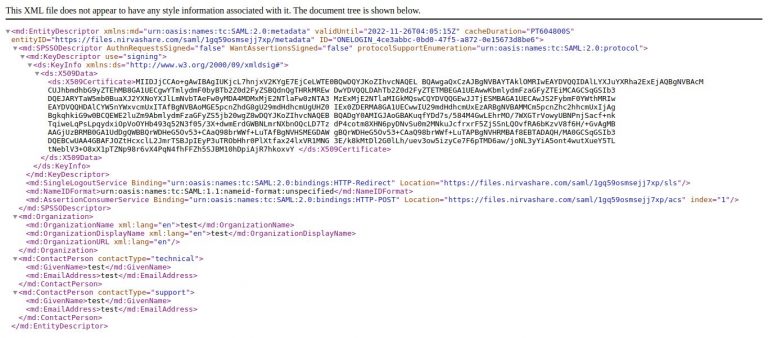
Salesforce Configuration
We need to create an enterprise application in Salesforce to integrate with NirvaShare:
- Sign in to salesforce portal https://login.salesforce.com/
- From the setup left menu list, click on App Manager.
For more information on connected apps, please refer HERE
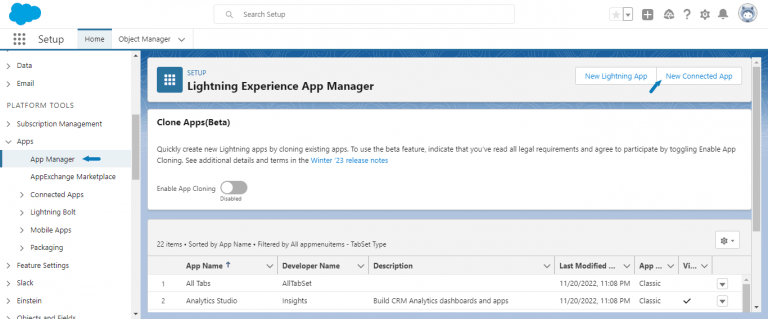
- On the top Right menu, click on New connected App.
- Provide a name as Nirvashare along with your email ID and click on Create.
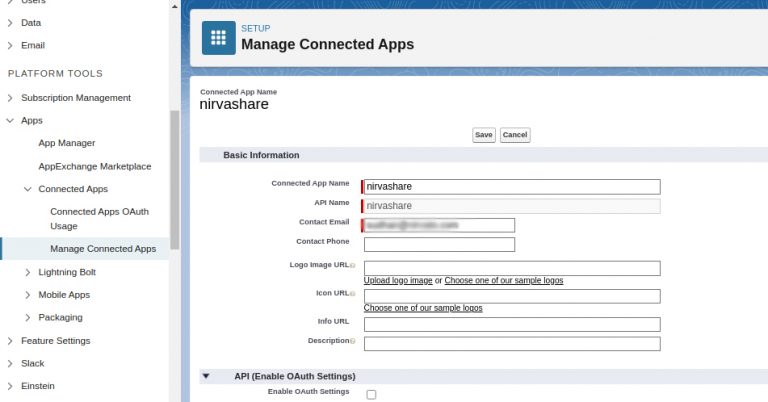
- After creating the app, go to Web App Settings .
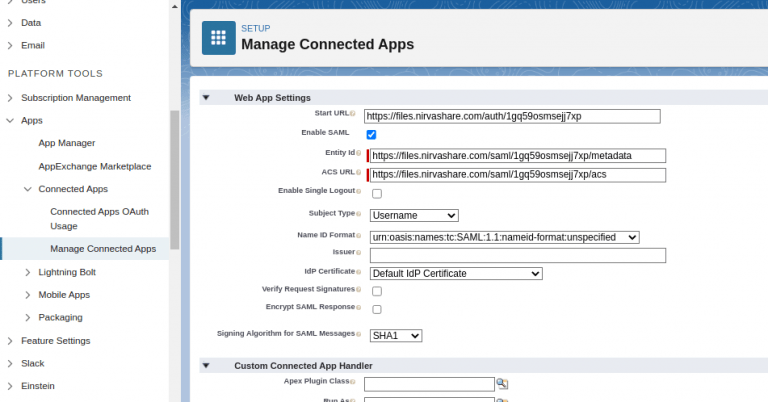
- We need to enable SAML, enter the start URL, Entity Id, ACS URL of NirvaShare. These information can be found from the XML metadata content obtained from Login Profile of NirvaShare based on steps in the previous section.
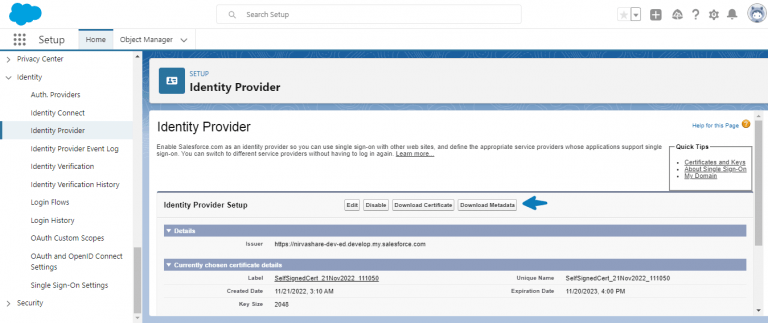
- Download the Salesforce Metadata XML file from SAML Signing Certificate section. Save it into your local file.
- This file content will be required while configuring Login Profile in NirvaShare Admin Console.
- To assign users to this connected app, either use existing Salesforce profile or create a new one and assign the profile to the connected app.
- To assign the profile to the connected app, click on Managed Connected App > Manage Profiles > Application Profile Assignment.
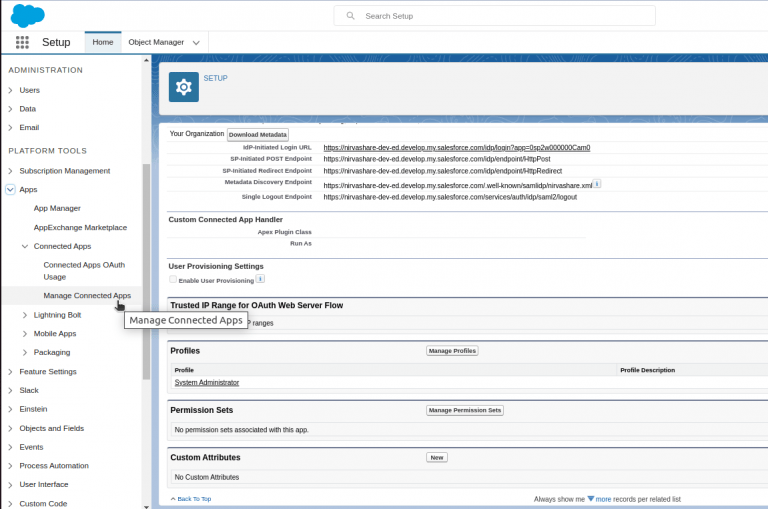
- Login to NirvaShare Admin Console and edit the Login Profile that was created based on the steps from previous section.
- Copy paste the Salesforce metadata file content from from previous steps in to the text area of External IDP SAML Metadata and update authentication.
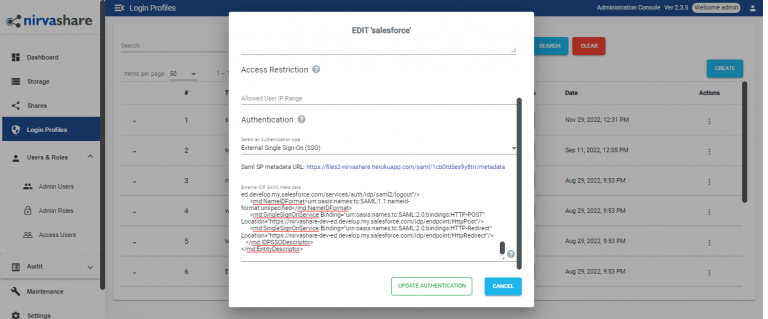
Sharing File/Folder
Once the configuration is completed based on the above sections, it is now good to share a file/folder with Salesforce users using SSO.
To share and collaborate files with Salesforce users, check HERE for information on creating Shares. During the configuration, make sure you select the Login Profile that was created based on the steps mentioned in this document.
